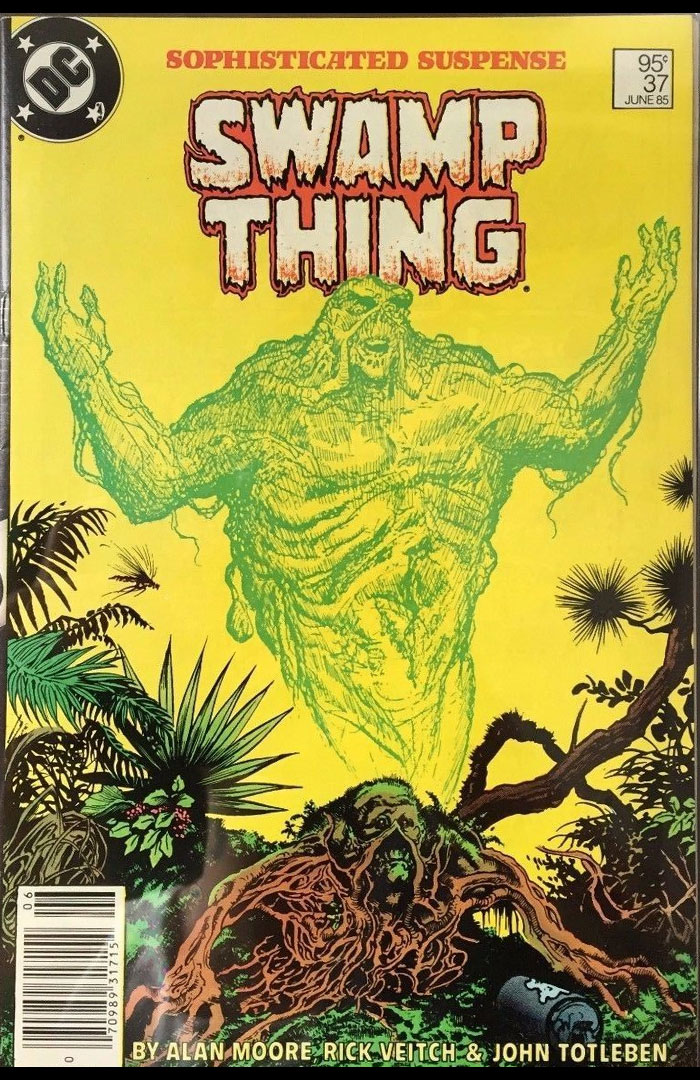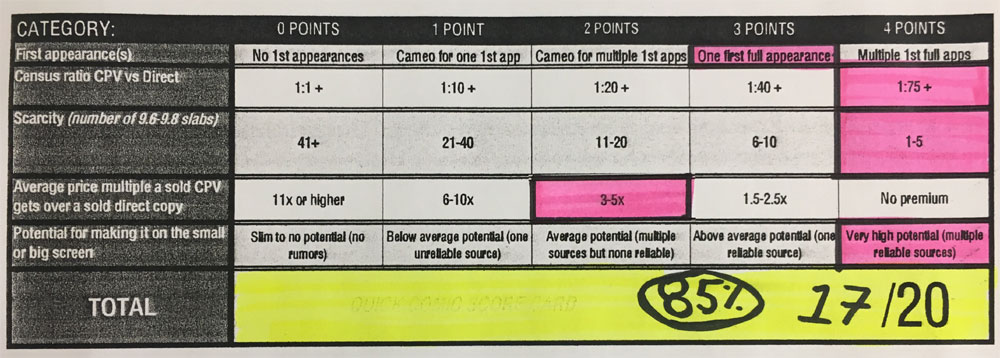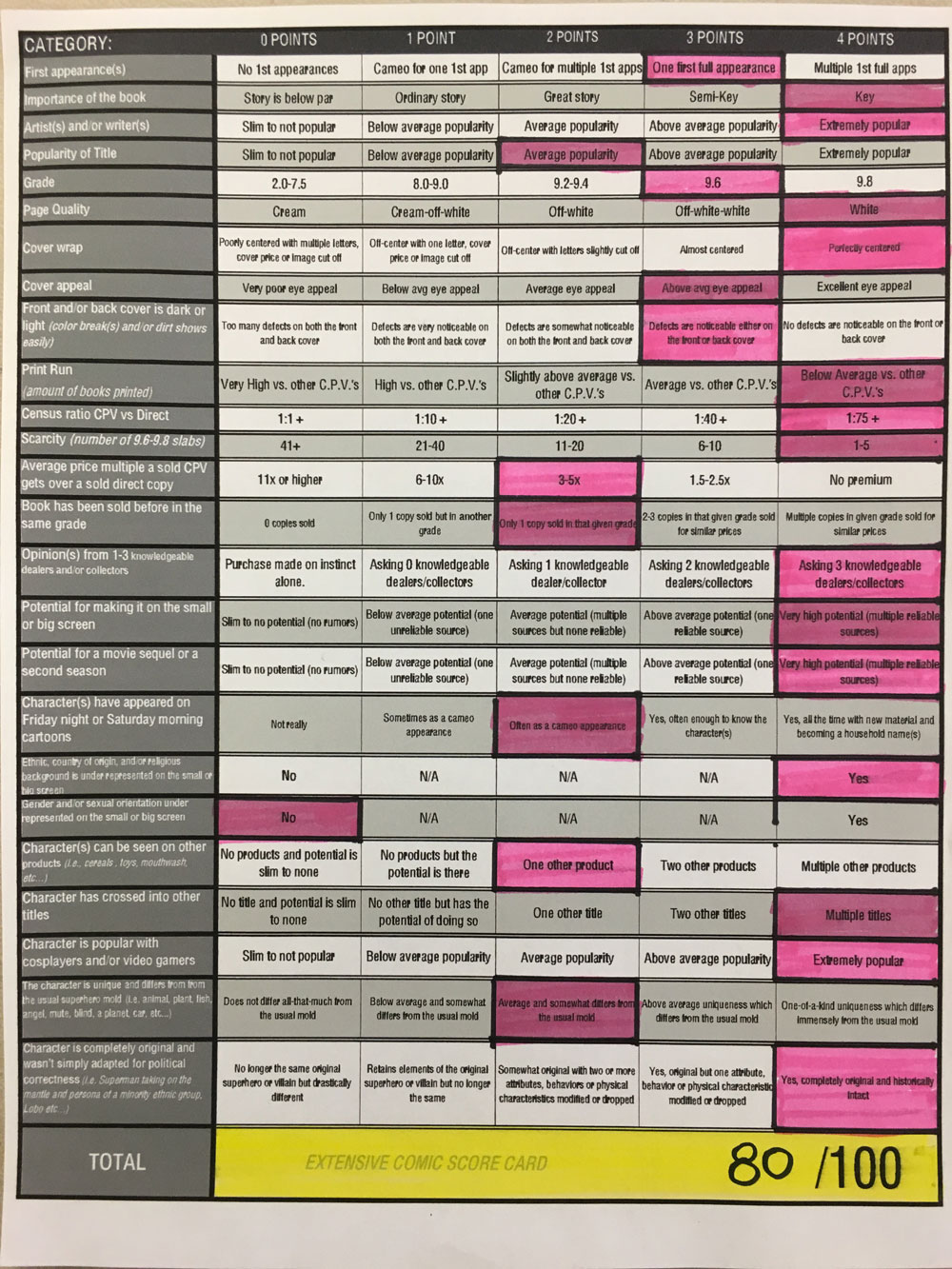
Rare Comics
By Angelo Virone — Cover price variant collector and historian (Contact by email), October 2018
For any investor wanting to add an extra layer beyond the classical two dimensional checklist we’ve all grown accustomed to over the years, I’d like to introduce something different. A Rubric that helps investors decide which books would best suit their personal investing needs: the “Comic Score Card” or a “C.S.C.”
A rubric helps me decide whether or not a particular comic (be it a direct edition or a C.P.V.) has strong future potential as an investment. Rubrics are great tools that educators use on a daily basis to help evaluate a student’s progress. I simply adapted this tool to help when investing in comics. A rubric can be simple or very complex, all depending on what you decide the criteria should consist of and how much value (how many points) you lend each category.
According to Wikipedia:
“In education terminology, rubric means “a scoring guide used to evaluate the quality of students’ constructed responses”. Rubrics usually contain evaluative criteria, quality definitions for those criteria at particular levels of achievement, and a scoring strategy.”
Here’s how I adapted this Rubric tool to comic book investing:

Below you shall find two Comic Score Card examples: the first example analyzes five categories to obtain a quick score, and a second longer example below that one is intended for those seeking additional categories with more detailed information. Each C.S.C. evaluates specific investing targets I personally aim to achieve when purchasing a book and may or may not be the right Comic Score Card for you, so please adapt the general score card idea according to your own style and interests.
Instructions:
![]() Download printer-friendly PDF or View as large image
Download printer-friendly PDF or View as large image

![]() Download printer-friendly PDF or View as large image
Download printer-friendly PDF or View as large image

After calculating the percentage score for a given book, assign a letter grade corresponding to that score as follows:
| Total | |
|---|---|
| A+ | 100% |
| A | 95% |
| A- | 90% |
| B+ | 85% |
| B | 80% |
| B- | 75% |
| C+ | 70% |
| C | 65% |
| C- | 60% |
| D+ | 55% |
| D | 50% |

Saga of the Swamp Thing #37, 95¢ Cover Price Variant
Suppose I wanted a quick score as well as an extensive score for a graded 9.6 Saga of the Swamp Thing #37 variant. Here’s how I would fill out my two comic score cards.
Example: Quick Comic Score Card for Swamp Thing #37 variant in 9.6:
Here’s how I would fill out my quick comic score card (see sample card below; click here to enlarge).

As you can see, it achieved a score of 17/20, or 85%, which means the book earned a ‘B+‘ representing a positive above average investment.
Example: Extensive Comic Score Card for Swamp Thing #37 variant in 9.6:
Here’s how I would fill out my extensive comic score card (see sample card below; click here to enlarge).

As you can see, it achieved a score of 80/100, or 80%, which means the book earned a ‘B‘ representing a positive above average investment.
Taking a medium average between the two Comic Score Cards:
Considering the possibilities for having one or more errors when completing any score card (i.e., personal bias and/or categories that don’t exactly fit perfectly in a score card) an average medium between the two score cards would help reduce this unintended consequence. See below on how I calculated mine:
85% (quick Comic Score Card)
+
80% (extensive Comic Score Card)
/2
= 82.5 % average medium Comic Score Card
(Representing a positive above average investment)
* I take into consideration books that hit a minimum score of 60% (C-) considering there is always a margin of error and that certain categories might not be perfectly suitable within that C.S.C. and unintentionally lower the overall percentage.
* Comic Score Cards are not perfect by nature and should always be used in conjunction with other tools.